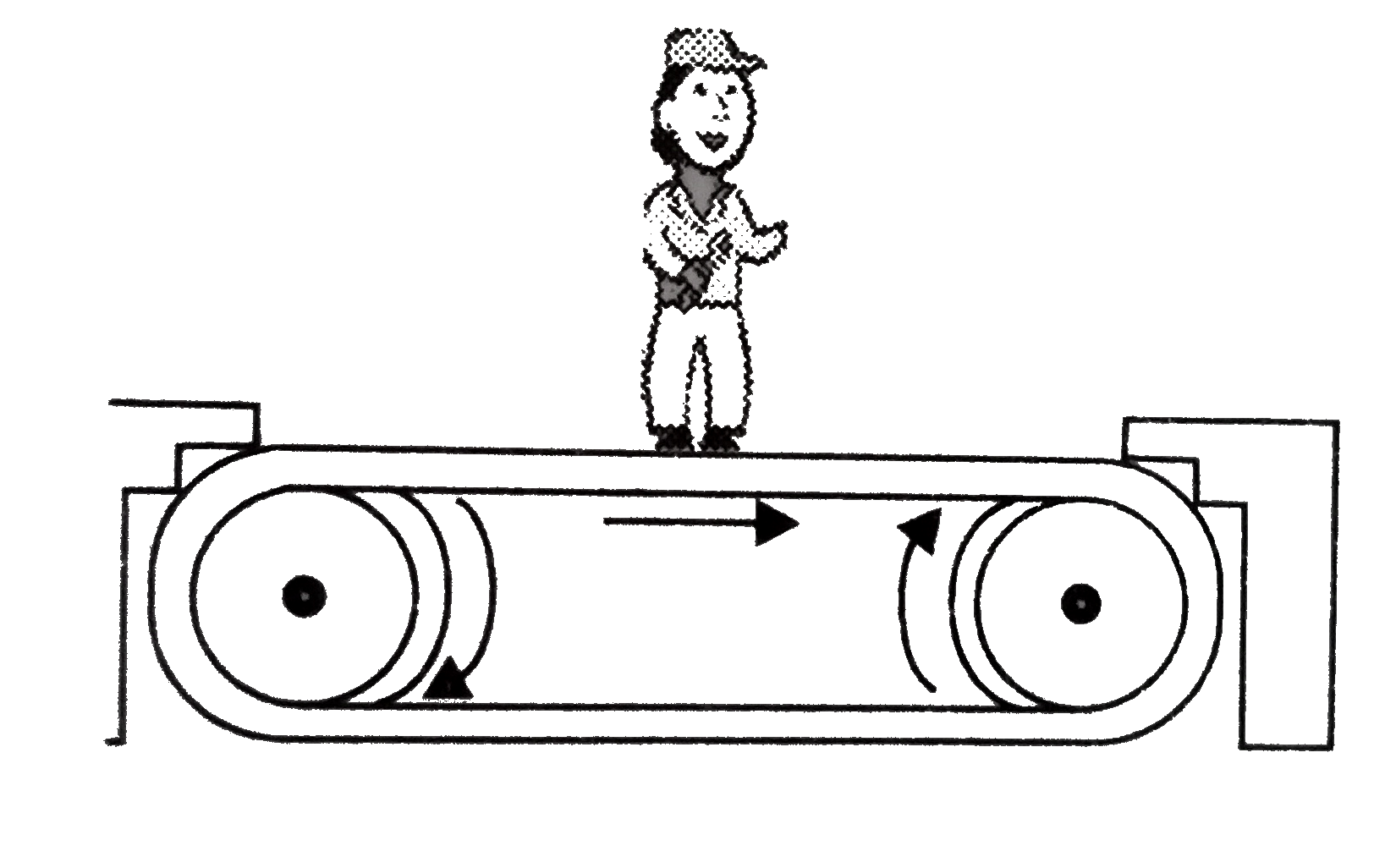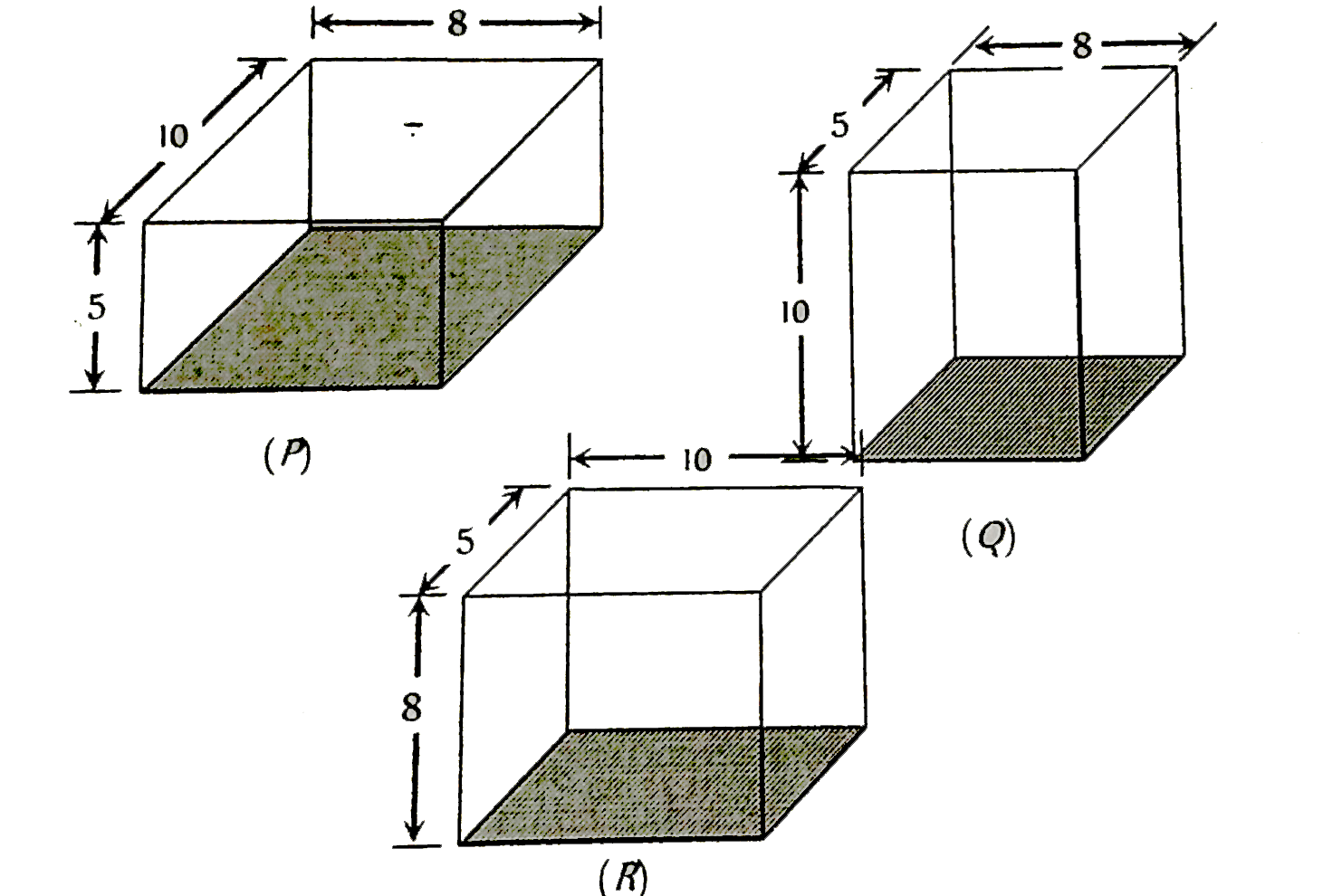A rectangular block is 5cm×5cm×10cm in size. The block is floating in water with 5 cm side vertical. If it floats with 10 cm side vertical, what change will occur in the level of water?
Rise
Fall
Remain same
Change, according to density of block
To solve the problem, we need to analyze the situation when the rectangular block is floating in water in two different orientations: first with the 5 cm side vertical and then with the 10 cm side vertical.
1. Identify the Dimensions of the Block:
The dimensions of the block are given as 5 cm x 5 cm x 10 cm.
2. Calculate the Volume of the Block:
The total volume V of the block can be calculated using the formula for the volume of a rectangular prism:
V=length×width×height=5cm×5cm×10cm=250cm3
3. Determine the Orientation of the Block:
- First Orientation: When the 5 cm side is vertical, the block's height above water is 10 cm and the immersed height is 5 cm.
- Second Orientation: When the 10 cm side is vertical, the block's height above water is 5 cm and the immersed height is 10 cm.
4. Calculate the Volume Displaced in Each Orientation:
- In the first orientation (5 cm side vertical), the volume of the block immersed in water can be calculated as:
Vd=base area×height immersed=(5cm×5cm)×5cm=125cm3
- In the second orientation (10 cm side vertical), the volume of the block immersed in water is:
Vd=(5cm×5cm)×10cm=250cm3
5. Apply Archimedes' Principle:
According to Archimedes' principle, the volume of water displaced is equal to the volume of the block that is submerged. Since the block is floating, the weight of the water displaced equals the weight of the block.
6. Analyze the Change in Water Level:
- In both orientations, the total volume of the block remains constant at 250 cm³. However, the volume of water displaced changes based on the orientation.
- When the block is oriented with the 5 cm side vertical, it displaces 125 cm³ of water.
- When the block is oriented with the 10 cm side vertical, it displaces 250 cm³ of water.
7. Conclusion on Water Level Change:
Since the volume of water displaced increases from 125 cm³ to 250 cm³ when the orientation changes from the 5 cm side vertical to the 10 cm side vertical, the water level will rise.
Final Answer:
The water level will rise when the block floats with the 10 cm side vertical.
The dimensions of the block are given as 5 cm x 5 cm x 10 cm.
The total volume V of the block can be calculated using the formula for the volume of a rectangular prism:
V=length×width×height=5cm×5cm×10cm=250cm3
- First Orientation: When the 5 cm side is vertical, the block's height above water is 10 cm and the immersed height is 5 cm.
- Second Orientation: When the 10 cm side is vertical, the block's height above water is 5 cm and the immersed height is 10 cm.
- In the first orientation (5 cm side vertical), the volume of the block immersed in water can be calculated as:
Vd=base area×height immersed=(5cm×5cm)×5cm=125cm3
- In the second orientation (10 cm side vertical), the volume of the block immersed in water is:
Vd=(5cm×5cm)×10cm=250cm3
According to Archimedes' principle, the volume of water displaced is equal to the volume of the block that is submerged. Since the block is floating, the weight of the water displaced equals the weight of the block.
- In both orientations, the total volume of the block remains constant at 250 cm³. However, the volume of water displaced changes based on the orientation.
- When the block is oriented with the 5 cm side vertical, it displaces 125 cm³ of water.
- When the block is oriented with the 10 cm side vertical, it displaces 250 cm³ of water.
Since the volume of water displaced increases from 125 cm³ to 250 cm³ when the orientation changes from the 5 cm side vertical to the 10 cm side vertical, the water level will rise.
The water level will rise when the block floats with the 10 cm side vertical.
Similar Questions
A block of wood is floating on water with its dimensions 50cm×50cm×50cm inside water. Calculate the buoyant force acting on the block. Take g=9.8Nkg−1
View SolutionA rectangular tank 30cm×20cm×12cm contains water to a depth of 6cm. A metal cube of side 10cm is placed in the tank with its one face resting on the bottom of the tank. Find the volume of water, in litres, that must be poured in the tank so that the metal cube is just submerged in the water.
View Solution
Knowledge Check
A triangle formed by the sides of length 4 . 5 cm, 6 cm and 4 . 5 cm is
AscaleneBisoscelesCequilateralDnone of theseAn iron block of sides 50cm×8cm×15cm has to be pushed along the floor. The force required will be minimum when the surface in contact with ground is
 A8cm×15cm surfaceB50cm×15cm surfaceC8cm×50cm surfaceDforce is same for all surface
A8cm×15cm surfaceB50cm×15cm surfaceC8cm×50cm surfaceDforce is same for all surface
A block of steel of size 5cm×5cm×5cm is weighed in water. If the relative density of steel is 7. its apparent weight is:
View SolutionA wooden cube (density 0.5 gm/c c) of side 10 cm floating in water kept in a cylindrical beaker of base area 1500cm2. When a mass m is kept on the wooden block the level of water rises in the beaker by 2mm. Find the mass m.
View SolutionA rectangular block of size 10cm×8cm×5cm is kept in three different positions P,Q and R in turns as shown in the figure. In each case, the shaded area is rigidly fixed and a definite force F is applied tangentially to the opposite face to deform the black. The displacement of the upper face will be

View SolutionA block of wood of volume 30cm3 floats in water with 20cm3 of its volume immersed.
Calculate the weight of the block of wood .
View SolutionAn ice-cube of edge is 10 cm floating in water. Time period of small vertical oscillations of the cube is: (Specific gravity of ice is 0.9)
View SolutionA 2kg brick of dimension 5cm×2.5cm×1.5cm is lying on the largest base. It is now made to stand with length vertical, then the amount of work done is : (taken g=10m/s2)
View Solution
